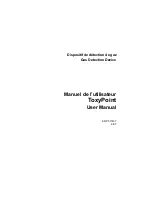
52
Glossary
All-Metal: Any mode or control setting allowing total acceptance of all metal types, iron, aluminum, tin, nickel,
gold, brass, lead, copper, silver etc...
Audio ID: Circuitry which produces different audio tones (pitch) for different target's conductivity.
Black Sand: One of the most extreme components of non-conductive, negative ground minerals. Magnetic.
Also called Magnetite (Fe304) or magnetic iron oxide.
Cache: Any intentionally buried or secreted hoard of valuables.
Conductive Salts: One of the major mineral types which make up the positive ground minerals. Wet ocean
salt/sand will produce a positive response due to its similar conductivity to metal.
Conductivity: The measure of a metal target's ability to allow eddy currents on its surface.
Depth: The greatest measure of a metal detectors ability to transmit an electromagnetic field into the ground.
De-tuning: Method of manually or automatically desensitize a metal detector so that it may locate the center
of a target.
Discrimination: Circuitry which ignores or otherwise indicates, a specific target based on its conductivity/
phase.
Drift: A loss or increase in threshold caused by temperature, time, or battery condition.
Eddy Currents: Small circulating currents of electricity.
Ferrous: Descriptive of any iron or iron bearing material.
Frequency: The number of complete alternating current cycles produced by the transmit oscillator per second.
Ground Balance: A state of operation in which specialized circuitry can ignore the masking effect ground
minerals have over metal targets.
Hot Rock: A rock which contains a higher concentration of mineralization than the surrounding ground.
Matrix: Refers to the total volume (average) of ground penetrated by a metal detector.
Menu: Series of listings and prompts on a visual display designed to aid the operator in feature selection.
Metal: Metallic substances: iron, foil nickel, aluminum, gold, brass, copper, silver, etc...
Microprocessor: An electronic component that can be programed to perform certain electronic functions.
Mineralized Ground: Any soil containing conductive or magnetic components.
Mode: A condition of operation selected by the operator for specific functions.
Motion Mode: Any mode that requires loop movement to respond to metals.
Non-ferrous: Not of iron, any metal that is not iron.
Non-Motion Mode: Any mode of operation that doesn't require movement of the loop to respond to metal
targets.
Phase: The length of time between eddy current generation sustained on a metals surface and the resulting
secondary electromagnetic field effect on the loops receive winding.
Pinpointing: Finding the exact center of a metal target.
Reject: An indication of a target non-acceptance by silence or a broken sound.
Sensitivity: The measure or capacity of a metal detector to perceive changes in conductivity within the loops
detection pattern.
Signal: An audio or display response alerting the operator that a target has been detected.
Stability: The ability of a metal detector to maintain smooth predictable performance.
Target: Refers to any object that causes an audio or display indication.
Visual ID: A feature which creates a visual indication to aid in identification of a target.
VLF (Very Low Frequency): A metal detector that operates in the 3-30 kHz frequency range.
Glossary
Содержание XLT
Страница 1: ......
Страница 56: ...56 Notes Notes Notes Notes Notes Notes ...




































